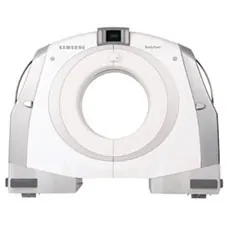Introduction
Computed Tomography (CT) has revolutionized diagnostic imaging in human medicine, providing detailed cross-sectional views of internal anatomy. However, its adoption in veterinary medicine has been slower due to cost and practicality constraints. However, technological advancements and decreasing costs make CT more accessible to veterinary practices. This analysis explores the potential expansion of CT use in general veterinary practices and its benefits, challenges, and future implications.
Current State of CT in Veterinary Medicine
- Usage and Accessibility: Historically, CT imaging in veterinary medicine has been confined to specialist centers or university hospitals. It is primarily used for complex cases where traditional X-rays or ultrasounds fail to provide sufficient detail.
- Benefits: CT scans offer superior image resolution, allowing for a more accurate diagnosis of conditions such as complex fractures, cancer staging, and intracranial disorders, to name a few.
- Limitations: The primary limitations have been cost—equipment and the operation—and the need for specialized training.
Advancements in CT Technology
- Smaller, More Affordable Units: Technological advancements are leading to the development of smaller and more cost-effective CT scanners suitable for general veterinary practices.
- Speed and Efficiency: Modern CT scanners can quickly complete scans, reducing the need for prolonged anesthesia—a significant consideration in veterinary medicine.
Benefits of Implementing CT in General Practices
1. Enhanced Diagnostic Capabilities:
- Ability to perform more complex diagnoses onsite, reducing the need for referrals and speeding up the treatment process.
- Improved accuracy in diagnosing diseases, leading to more effective treatment plans.
2. Improved Client Service:
- Offering advanced diagnostics onsite can improve client satisfaction as it provides a one-stop solution for pet care.
- Builds the practice’s reputation as a cutting-edge facility.
3. Economic Benefits:
- While the initial investment is significant, having a CT scanner can be economically beneficial over time. It attracts more cases, including referrals from practices without such facilities.
- Provides an additional revenue stream from the CT services (i.e., surgical, oncological).
Challenges and Considerations
- High Initial Investment: The cost of purchasing and installing a CT scanner is still considerable, which can be a barrier for smaller practices.
- Operational Costs: Ongoing costs such as maintenance, software updates, and training need to be carefully managed.
- Space Requirements: CT scanners require a dedicated space, often more significant than typical X-ray rooms.
- Trainingand Expertise: Veterinarians and technicians require additional training to operate CT scanners and interpret the complex images they produce for telemedicine consultation.
Strategies for Implementation
- Partnerships and Collaborations: Forming partnerships with nearby practices without CT capabilities can ensure steady usage and financial viability.
- Training and Education: Investing in regular training for staff to operate and maintain the equipment efficiently and to interpret the data accurately.
Future Prospects
- Integration with Other Technologies: CT technology’s integration with other diagnostic tools, like ultrasound and digital radiography, can provide veterinary practices with a comprehensive diagnostic suite.
- Telemedicine: Advances in telemedicine can allow general practitioners to consult with specialists remotely for image interpretation and diagnosis, broadening the scope of cases that can be managed onsite.
- Artificial Intelligence (AI): AI and machine learning could further enhance CT imaging capabilities, automating some aspects of image analysis and improving diagnostic accuracy.
Conclusion
The future of CT in veterinary general practice looks promising, driven by technological advancements that reduce size and cost. As CT becomes more accessible, it can significantly enhance diagnostic capabilities, improve patient care, and provide economic benefits to practices. However, successful integration requires careful financial investment, space, and training planning. Practices must weigh these factors against the potential benefits to determine the technology’s feasibility.

